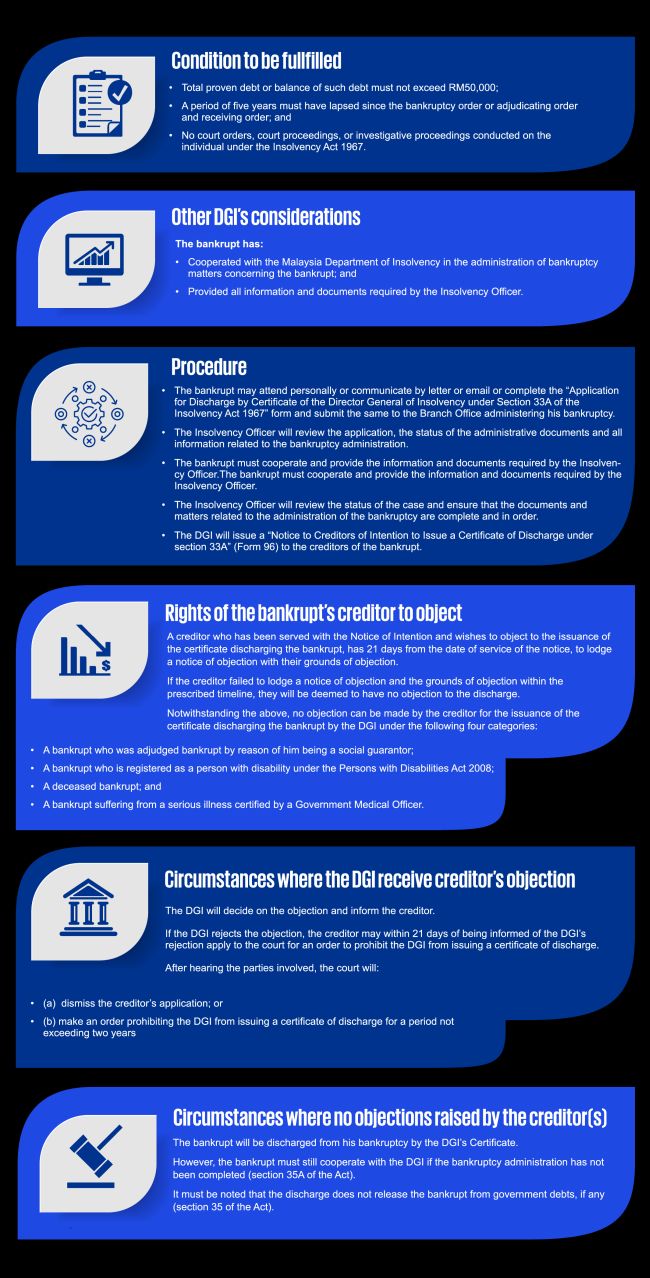In recent years, the Malaysian government has taken various initiatives to revamp insolvency laws with the goal of assisting the public to cope with financial difficulties arising from the Covid-19 pandemic.
With the amendment to the Insolvency Act in 2020, the bankruptcy threshold in Malaysia is currently set at RM100,000, which was raised from the original RM50,000. This was the second increase of the bankruptcy threshold within the span of a few years, with the previous increase from RM30,000 to RM50,000 in 2017.
As it stands today, a creditor may not file for bankruptcy action against a debtor if the amount of the debt is less than RM100,000.
Automatic and faster discharge of bankruptcy?
Bankruptcy is a serious matter and has grave implications on the bankrupt individual. A discharge, in essence, is a reset button, releasing the bankrupt from his debts to allow him to start afresh.
During the Budget 2023 Presentation, Prime Minister Datuk Seri Anwar Ibrahim announced that the government is looking to further revamp the Insolvency Act 1967 to ensure that individuals who are bankrupt could be discharged more quickly.
Among the immediate initiatives to be implemented would be individuals, whose bankruptcy cases are of a debt of less than RM50,000 (small-scale debt), could be discharged by the Director General of Insolvency's Certificate with effect from 1 March 2023.
The Guidelines, issued by the Malaysian Department of Insolvency, for the discharge of bankruptcy with small-scale debts are summarised in the table below:

For more detailed information, please refer to the Malaysia Department of Insolvency.
The proposed amendments to the Insolvency Act 1967, which is expected to be tabled in the next parliamentary sitting in May-June 2023, if passed, would further ease the process of discharge of bankrupts. Among the amendments proposed are:
- the setting of time limits for the filing of Proof of Debt Forms by Creditors (section 42 and Schedule C of Insolvency Act 1967) to avoid the issue of late filing which could make it difficult to discharge bankrupt individuals;
- to make improvements to the automatic discharge provisions under section 33C of Insolvency Act 1967 so that bankrupt individuals can be discharged from bankruptcy in a shorter period or automatically;
- to make improvements to section 42 and Schedule C of Insolvency Act 1967 by abolishing the obligation to hold the first meeting of creditors so that the bankruptcy administration can continue immediately; and
- to add category of cases that can be discharged using the Director General of Insolvency's Certificate, for example, bankrupt individuals aged 70 and above, for bankrupt individuals who are incapacitated because they have been diagnosed as mentally ill under the Mental Health Act 2001.
The content of this article is intended to provide a general guide to the subject matter. Specialist advice should be sought about your specific circumstances.

